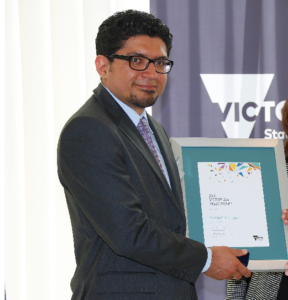Solar offers clean, renewable energy, but not just for powering our residential homes. Sunlight could be harvested to make more eco-friendly products.
Those glorious sun rays you like to catch at the beach could be used to meet much of the world’s energy needs over the next century.
When most of us think of solar energy, there are two things that likely come to mind: glorious sunshine and rooftops strewn with panels of blue rectangular photovoltaic cells.
It’s true that across the country solar is rapidly growing in the energy mix, with Aussie households leading the world in terms of uptake. Yet, the potential for solar energy extends way beyond residential homes.
Solar could provide a significant fraction of the world’s energy needs over the next century, and photovoltaics – which convert the sun’s energy into electricity – are just one part of the solution.
As one of our scientists is proving, we could convert solar into other very useful forms of energy, such as chemical energy, to generate new high value ‘green’ products.
Nanoscientist, Daniel Gomez, has come up with a sophisticated and efficient method to capture sunlight using invisible metal particles.
While a large sheet of metal will reflect light, metal at the nanoscale (that’s an 8000th of a human hair in width) traps and absorbs it.
In a process similar to photosynthesis, the solar energy stored in these nanoparticles can be converted into other useful substances through a chemical reaction.
Daniel was recently awarded a Victorian Fellowship for his solar energy research.
The advantage of working with these tiny structures, is that there’s greater control over performance and predictability of the chemical reaction and the end-product achieved.
There’s potential to create a whole host of different substances for use in specialty applications spanning pharmaceuticals, health, cosmetics, housing, transportation and telecommunications. For example, fine chemicals needed in highly-sensitive sensors and advanced drugs.
Taking advantage of sunlight allows materials previously made using fossil fuel-based electricity to be made in way that’s eco-friendly and sustainable. This will help manufacturers reduce their emissions and give way to the development of marketable ‘green’ products and more competitive processes.
Daniel, who took home a 2015 Victorian Fellowship for this research, will undertake an international study mission of up to $18,000 next year to build a network of collaborators to further explore the technology and its industrial applications.
Want to learn more about how we’re supporting energy sustainability in Australia?
During November, thousands of Australians will experience the power of renewable energy when they hop on our Infinity Swing — a giant eight-person swing that generates energy to power a stunning light and sound show.
Find out about the Infinity Swing and our other energy innovations.




19th November 2015 at 9:03 pm
Csiro are working on turbines to scavenge the energy from permanent water flow at both ends of the service; ie in the fresh water pipelines initially at 20klm intervals and both sewer and storm water flow. That is they will be when they read this. The waste water turbines are self contained self cleaning and are dropped in initialy every10klm without any installation requirement. Industry can buy one or multiple turbines to enjoy free power.
17th November 2015 at 3:31 pm
HOW LONG BEFORE WE SEE A REAL ENCONOMIC BENEFIT THAT CREATES MONEY INSTEAD OF SPENDING IN SUPPORT?